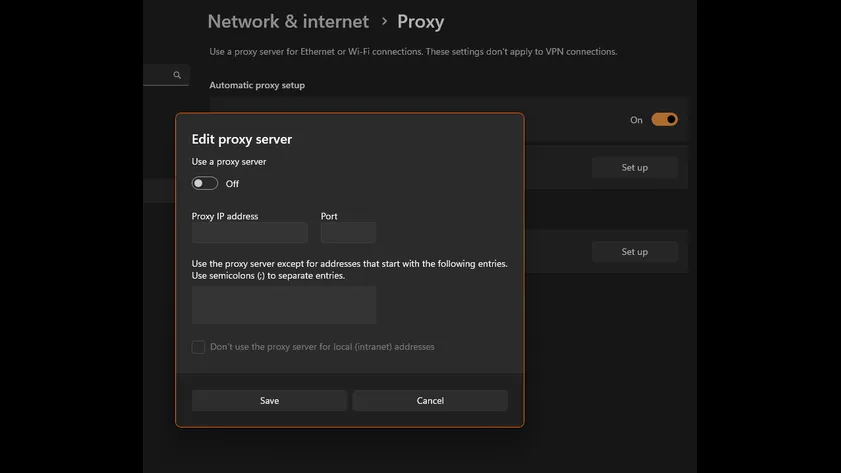The Nuiances Of Proxy Sites
Gustavo
0
11
02.13 09:06
An proxy or proxy server is a program that acts in the middle between client and server via the internet. Without proxy, a user will send a request to the resource directly to the server, and then the server will serve direct to the client. Although this method is easy to comprehend and utilize, adding proxies offers advantages such as greater performance, privacy, security, among other things. As an additional layer of passing through, proxies act as a guardian to the internet between servers and clients.
In general, the combined system of server hardware along with the software for proxy installation is often called proxy servers. But, this article will concentrate on proxy servers which are generally described as software as and those employed in conjunction with web servers. This article will provide a brief overview of the two major types of proxies: they are one that is forward and a reverse proxy. Each has its own usage which may be confusing due to a similar terminology.
This article will give you an understanding of types of proxies and subtypes they are, as well as their benefits in a range of configurations. Through this article, you'll be aware of what situations in which a proxy is beneficial, and determine the best option for forward or reverse proxy depending on the specific situation.
Understanding Forward Proxies
Forward proxy also known by the name of open proxy. An open proxy serves as a representative for a client who is trying to send an online request to a server. In this scenario, the entire request sent by the client will rather be controlled by the forward proxy. The forward proxy, in its place as the customer will examine the request. First, it will check if the client been granted permission to send requests via this particular forward proxy. It will then deny a request and forward it to the source server. The client does not have direct connection to the internet. It can access only what the forward proxy allows it to access.
One of the most common uses for forward proxies is to provide greater security or privacy on the internet. A forward proxy is connected to the internet in place of a client. as a result it utilizes an alternate IP address from that of the client's initial IP address.
Based on the way it was set up according to the method of configuration, forward proxy may offer a range of features depending on how it's configured. This allows users to:
Avoid ad tracking.
Circumvent surveillance.
Find out the restrictions that apply to the location you are in.
Forward proxies can also be used in systems that use centralized security and dependent access, such as at workplaces. If all traffic on the internet flows through an open forward proxy, an administrator can limit access for only a select group of users to the internet, which is filtered by a common firewall. Instead of having firewalls in place on the client layer, which can comprise a variety of devices with diverse environments and users, it is possible to install a firewall located at the front proxy layer.
It is essential to note that forward proxy servers have to be manually set up to be utilized, whereas reverse proxy servers can remain unnoticed by clients. Depending on the type of IP address the client, it is sent to the server that created it by the forward proxy privacy and security is granted or kept hidden.
There are many choices to think about for forward proxies:
Apache: A popular open-source web server that provides forward proxy capability.
Nginx is another well-known open-source web server with forward proxy features.
Squid: An open-source forward proxy which uses the HTTP protocol. Squid doesn't come with a complete web server application. It is possible to read our guide on how to configure Squid proxy to permit private connections in Ubuntu 20.04.
Dante Forward Proxy that utilizes the SOCKS protocol instead of HTTP, making it better suitable for applications such as peer-to -peer traffic. You can also learn how to setup the Dante proxy to allow private connections on Ubuntu 20.04
Understanding Reverse Proxies
A reverse proxy functions as an intermediary for a web server that handles any requests made by clients on its behalf. The web server could consist of a single server, or several servers. In addition, it could serve as an app server such as Gunicorn. In either scenario the request will come from an internet user in general. In the majority of cases the request will be made directly to the web server which has all the resources that the user is in need of. In contrast reverse proxy functions as an intermediary that isolates Web server from direct interaction with the internet.
From a consumer's point the consumer's perspective, working with reverse proxy is not different from using an internet server direct. It's pretty much the same however the user cannot see the difference. The client requests this resource and it is then granted without additional configuration needed to be performed by the customer.
Reverse proxies provide features such as:
A centralized layer of security to protect the server.
Controlling traffic coming inbound according to rules that you create.
A new feature for caching is now available.
While centralized security is a benefit of both reverse and forward proxies, reverse proxies provide this to only the server layer and not to the client layer. instead of maintaining firewalls at Web server layers, which could comprise multiple servers and different configurations, the bulk of security measures for firewalls are targeted towards the reverse proxy layer. Additionally, removing the burden of interfacing with firewalls and communicating with clients that are not web servers allows the firewall to focus on meeting the requirements of their customers.
If there are multiple servers operating within a reverse proxy it also determines which requests are sent to which servers. There are many web servers operating on the same server and serving different kinds of resources or a mix of both. They use the HTTP protocol, which is similar to a traditional web server. However, they could also be equipped with other protocols for application servers such as FastCGI. You can set up reverse proxy settings to direct the clients to specific servers depending on the type of resource they are searching for, or follow certain rules regarding traffic load.
Reverse proxies also have the ability to gain advantages from their positioning ahead of web servers by offering caching capabilities. Large static assets can to be set up with caching rules so that they do not have to connect with web servers every time you request. Certain software solutions allow you to directly serve static files without touching the web server even once. Furthermore reverse proxy is able to manage compression of these assets.
The renowned Nginx web server also functions as a powerful reverse proxy solution. Although it is true that the Apache web server is also equipped with a reverse proxy which is an additional option for Apache but Nginx was originally built for and is focused on reverse proxy capabilities.
Differentiating Forward Proxy and reverse Proxy Examples
Since "forward" and "reverse" have connotations of directionality as well as misleading comparisons to "incoming" as well as "outgoing" traffic. It could be confusing because both types of proxies process requests and responses. The best way to differentiate between forward and reverse proxy service is to take into account the requirements of the application that you're developing.
A reverse proxy is a great option when you are developing a solution to offer web-based services on the internet. They function as servers for any interaction with the Internet.
Forward proxy applications are useful when they are put in front of a client for personal use as well as in an office environment. They are your client's representative when you connect to the internet.
The use case-based differentiation instead of focusing on the common naming conventions can assist you in avoiding confusion.
Conclusion
This article defined the definition of a proxy along with two types: the forward proxy and the reverse proxy. Practical applications as well as an exploration of useful features were utilized to distinguish between forward and reverse proxies. If you're interested in learning more about the ways to implement proxies then you should read our tutorial on how to configure Nginx as a web server and reverse proxy with Apache running the Ubuntu 20.04 server.
For those who have any kind of inquiries relating to where by in addition to the way to make use of Proxy Sites (profiles.xero.com), you possibly can email us at the web site.




